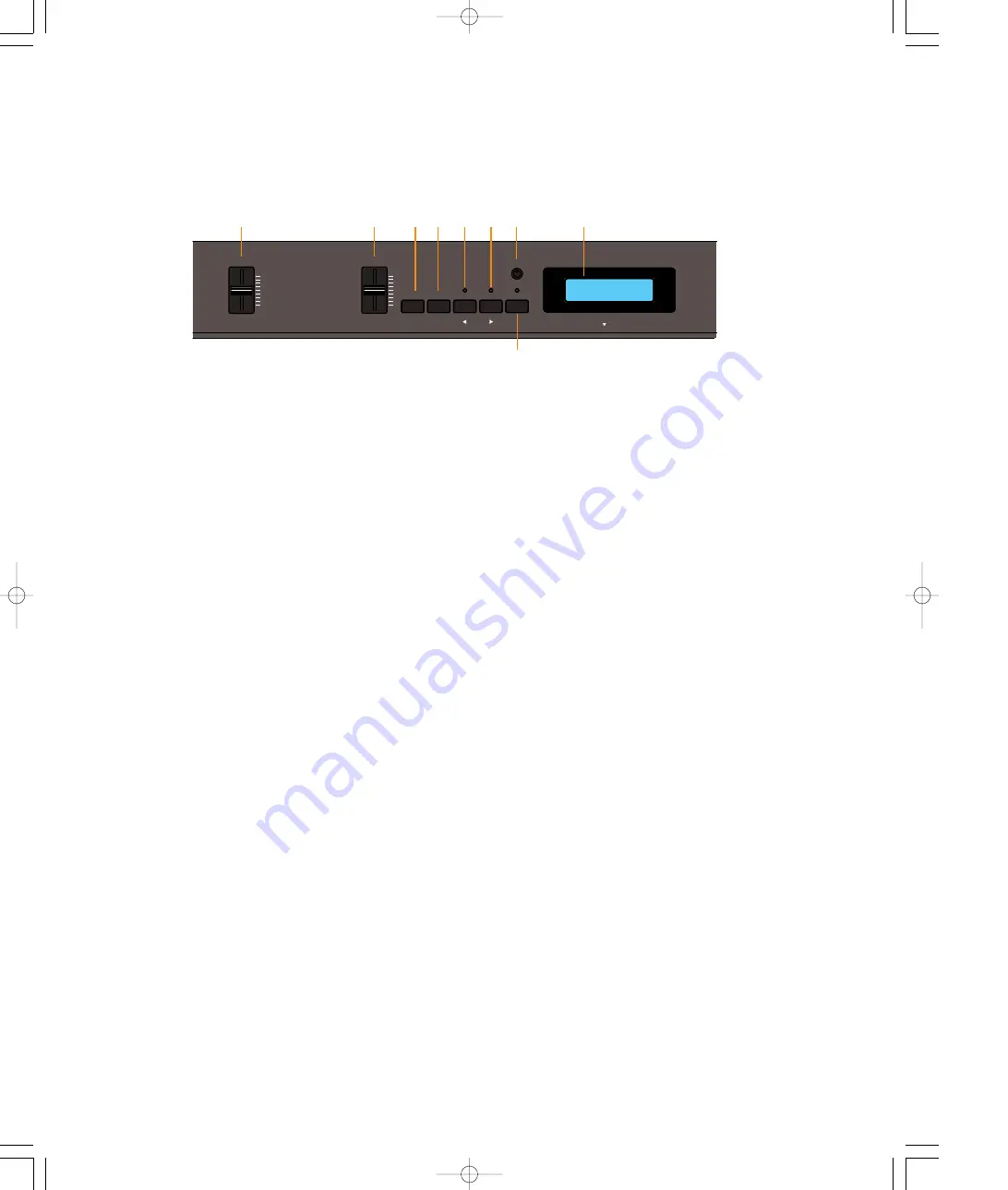
11
!
[VOLUME] slider
This slider adjusts the overall volume of sound output from the
internal speakers (or headphones, if connected) as well as the
sound output from the [OUTPUT] jacks on the rear panel. Moving
the slider upward increases volume level, while moving the slider
downward decreases volume level.
"
[CS, DATA ENTRY] slider
This is a multiple function slider. As a [CS] (continuous slider), you
can assign it to control a variety of functions. As a [DATA ENTRY]
slider, you can use it to change specific settings and parameters,
depending on the current mode and status. Moving the slider
upward increases the specified value, while moving the slider
downward decreases the specified value.
#
[PS1, –1/NO] button
This is a dual function button. As a [PS1] (Panel Switch 1) button,
you can assign it to control various functions of the internal voices
as well as connected MIDI devices, as set by the PS Edit function.
As a [–1/NO] button, you can use it to change parameter settings
in decrements.
$
[PS2, +1/YES] button
This is a dual function button. As a [PS2] (Panel Switch 2) button,
you can assign it to control various functions of the internal voices
as well as connected MIDI devices, as set by the PS Edit function.
As a [+1/YES] button, you can use it to change parameter settings
in increments.
%
[SPLIT, BALANCE,
1
] button
This is a multiple function button. As a [SPLIT] button, you can use
it to enter Split mode, whether in Voice Play or Performance Play
mode, determine the split point and assign the keyboard area for
the main and sub voices. As a [BALANCE] button, you can use it
to set the relative volume levels of each Split and Dual voice, by
holding the [BALANCE] button and moving the [DATA ENTRY]
slider
"
. As a [
1
] (cursor left) button in Edit mode, you can use it
to move the cursor to the left in the LCD screen in order to
position it over a desired parameter.
&
[TRANSPOSE, DETUNE,
q
] button
This is a multiple function button. As a [TRANSPOSE] button, you
can use it to set the keyboard transpose value for single as well as
both Dual voices or Split voices. As a [DETUNE] button, you can
use it to set the detune value for the two Dual voices, by holding it
and moving the [DATA ENTRY] slider
"
. As a [
q
] (cursor right)
button in Edit mode, you can use it to move the cursor to the right
in the LCD screen in order to position it over a desired parameter.
'
[MIDI, PAGE] button
This is a dual function button. As a [MIDI] transmit button, you can
use it to quickly enable or disable the P-200’s transmission of MIDI
messages. You can also hold the [MIDI] button while pressing
other buttons to access certain features. As a [PAGE] button, you
can use it to step through the various pages of Edit functions
when the P-200 is in Edit mode.
(
[CONTRAST] dial
This dial lets you adjust the contrast of the LCD screen for
optimum visibility. Rotating it to the left will decrease screen
contrast, while rotating it to the right will increase screen contrast.
)
LCD screen
This backlit 32-character Liquid Crystal Display screen provides
various information about the modes and operating status of the
P-200. Certain messages are displayed only temporarily, but you
can designate the “Popup Time” according to your preference.
PAGE
DETUNE
TRANSPOSE
BALANCE
SPLIT
+1/YES
-1/NO
MIDI
PS
2
PS
1
CONTRAST
C3
VOLUME
MAX
MIN
PAGE
DETUNE
TRANSPOSE
BALANCE
SPLIT
+1/YES
-1/NO
MIDI
PS
2
PS
1
CONTRAST
C3
VOLUME
MAX
MIN
CS
DATA ENTRY
!
"
# $ % &
'
(
)
■
UPPER PANEL
—
B
P200̲01.QX 98.4.21 4:58 PM ページ 11












































